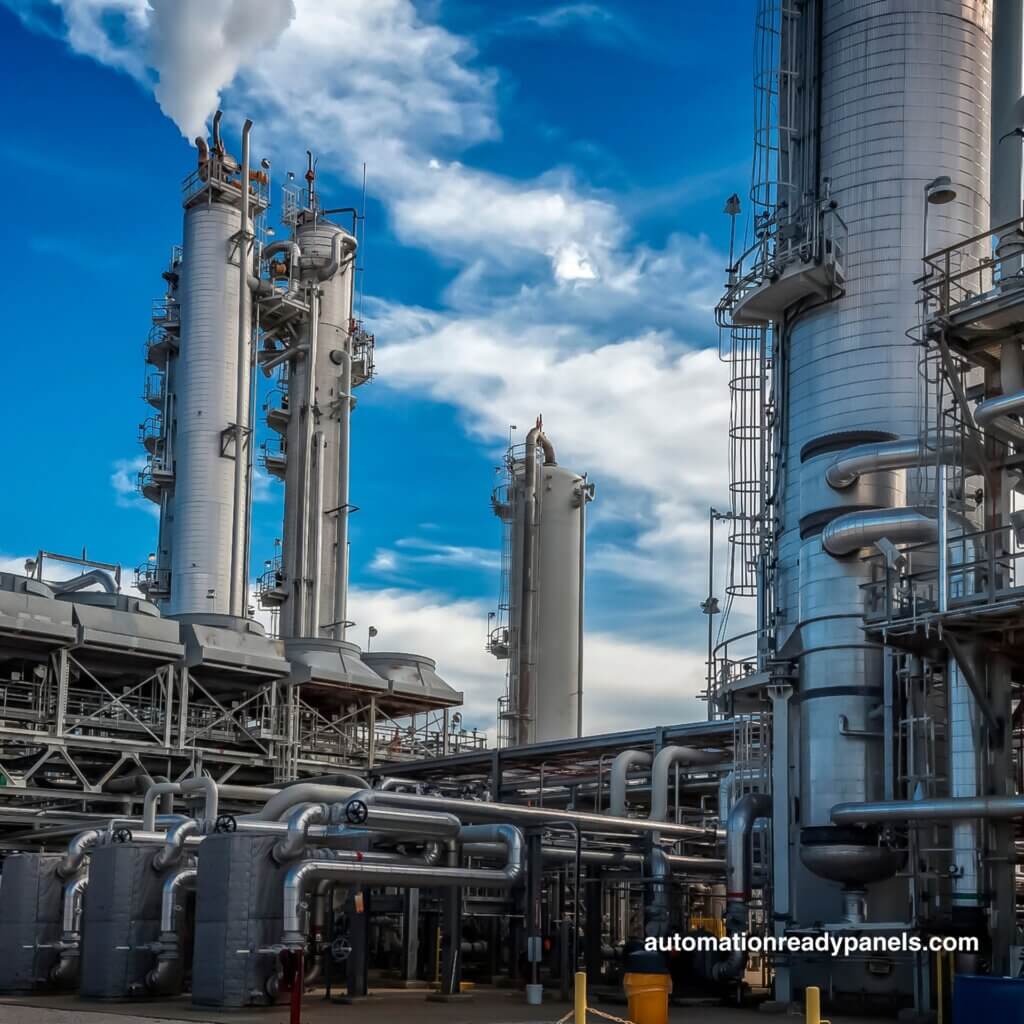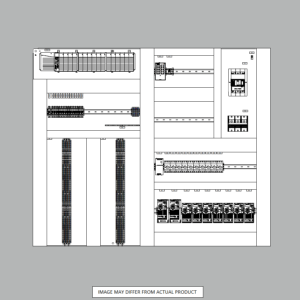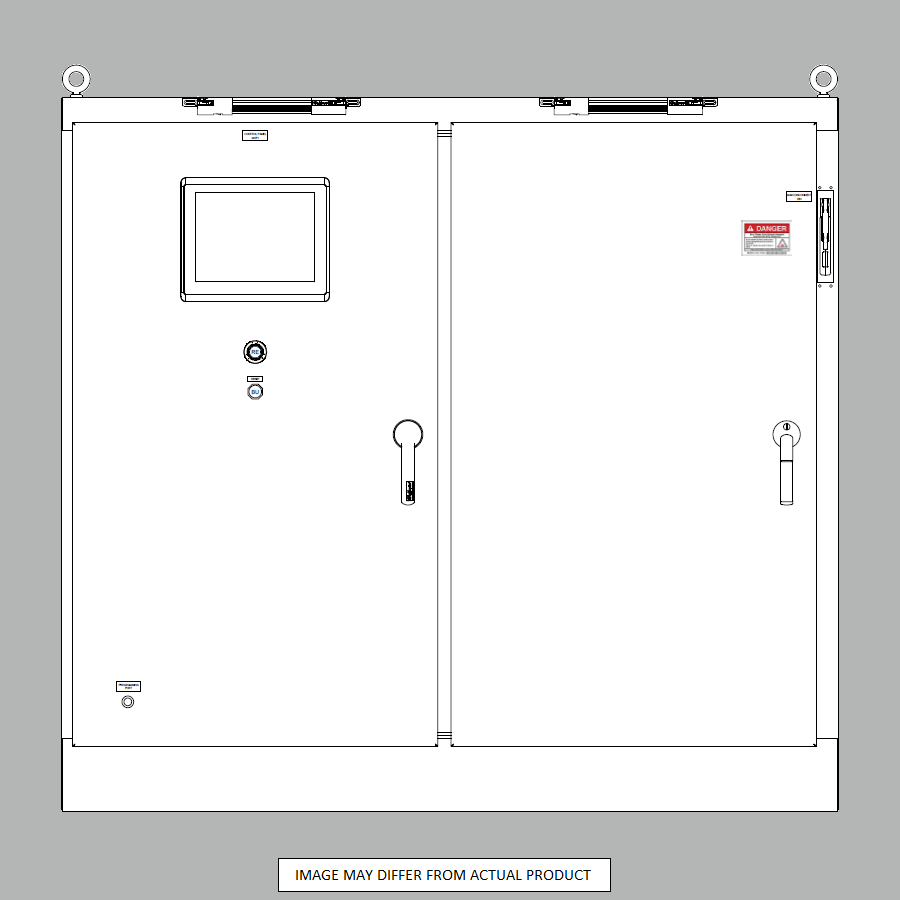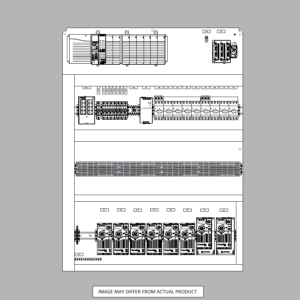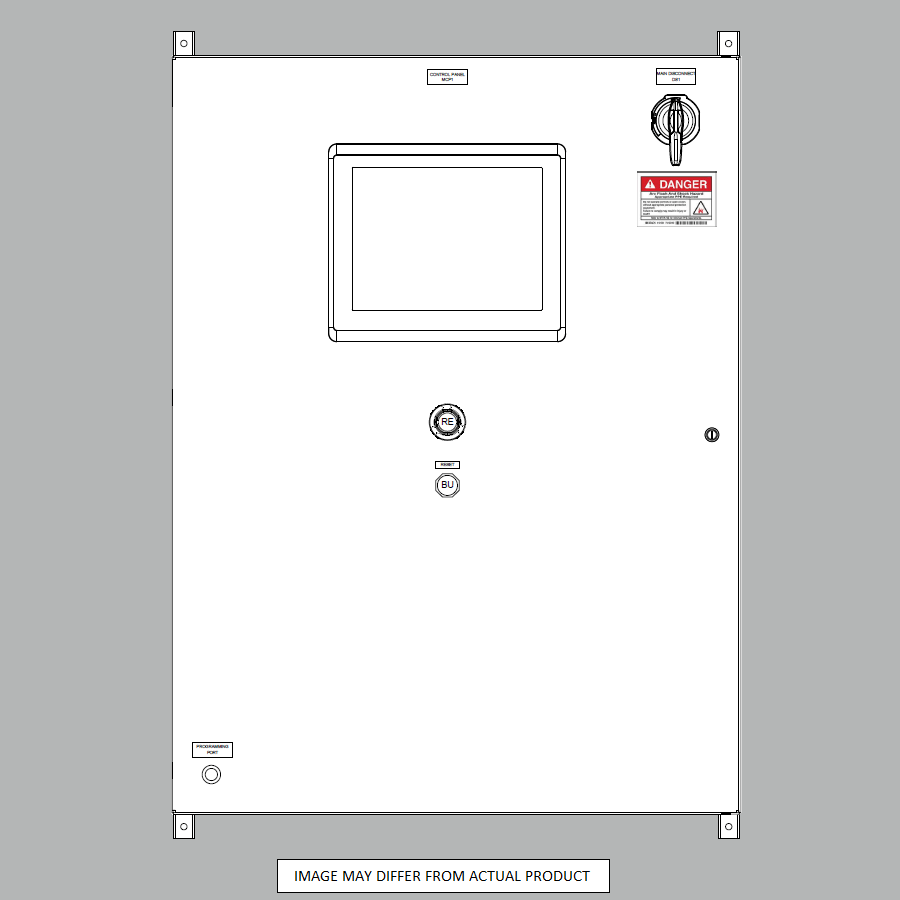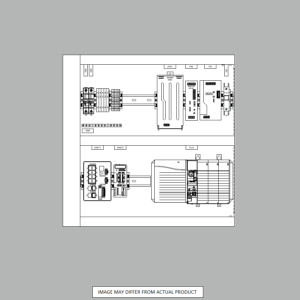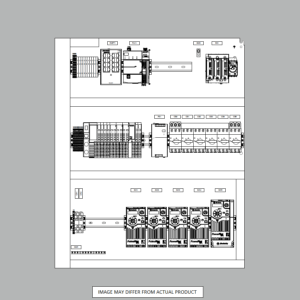Rise of Automation in Chemical Plants: Comprehensive Overview
In the ever-evolving landscape of industrial manufacturing, chemical plants stand at the forefront of innovation. The integration of automation technologies has ushered in a new era of efficiency, safety, and sustainability.
This article discusses the transformative impact of automation on chemical plants, exploring its various benefits and the challenges that come with this technological revolution.
Understanding Automation in the Chemical Industry
Defining Automation in the Chemical Context
Automation in chemical plants goes far beyond simple mechanization. It’s a sophisticated interplay of machines, artificial intelligence (AI), and advanced control systems that work in harmony to optimize every aspect of chemical production. At its core, automation aims to reduce human intervention in routine tasks, enhance precision, and maximize output while minimizing risks.
Key technologies driving this automation revolution include:
- Supervisory Control and Data Acquisition (SCADA) systems
- Distributed Control Systems (DCS)
- Programmable Logic Controllers (PLC)
- Industrial Internet of Things (IIoT) devices
These technologies form the backbone of modern chemical plant automation, enabling real-time monitoring, data analysis, and process control on an unprecedented scale.
Historical Perspective: From Manual to Automated
The journey from manual operations to fully automated chemical plants has been a gradual but transformative one. In the early days of chemical manufacturing, workers relied heavily on manual valve adjustments, visual inspections, and rudimentary control systems. The introduction of pneumatic and electronic controllers in the mid-20th century marked the beginning of the automation era.
As computer technology advanced, so did the sophistication of automation systems. The 1970s and 1980s saw the widespread adoption of PLCs and DCS, laying the groundwork for the highly integrated and intelligent systems we see today. This evolution has not only improved efficiency but has also significantly enhanced safety and product quality.
Key Drivers of Automation Adoption in Chemical Plants
Enhancing Safety and Reducing Risk
Safety is paramount in chemical plants, where the stakes are incredibly high. Automation plays a crucial role in mitigating various hazards:
- Chemical exposure: Automated systems can handle and transfer hazardous substances, minimizing direct human contact.
- Temperature fluctuations: Precise control systems maintain optimal temperatures, preventing dangerous thermal runaways.
- Pressure anomalies: Automated pressure regulation systems can quickly respond to deviations, averting potential disasters.
Moreover, automation has become indispensable in meeting stringent regulatory requirements. Compliance with standards set by the Occupational Safety and Health Administration (OSHA) and the International Electrotechnical Commission (IEC) is more achievable with automated systems that can consistently monitor and control critical parameters.
Boosting Efficiency and Productivity
The impact of automation on efficiency in chemical plants is nothing short of revolutionary. Automated systems excel at:
- Streamlining processes: From raw material handling to reaction control and product refinement, automation ensures consistency and precision at every stage.
- Optimizing energy use: Intelligent systems can adjust energy consumption based on real-time demand, significantly reducing waste.
- Minimizing downtime: Predictive maintenance capabilities allow for scheduled upkeep, reducing unexpected shutdowns.
By optimizing these aspects, chemical plants can achieve higher throughput, improved product quality, and reduced operational costs.
Economic Benefits: Profitability and Market Advantage
The economic case for automation in chemical plants is compelling. Key financial benefits include:
- Lower operating costs: Reduced labor requirements and improved energy efficiency translate to significant savings.
- Increased production capacity: Automated plants can operate 24/7 with minimal human intervention, boosting output.
- Improved market responsiveness: Flexible automated systems allow plants to quickly adjust production to meet changing market demands.
- Competitive pricing: Enhanced efficiency enables companies to offer competitive prices while maintaining profitability.
These economic advantages position automated chemical plants to thrive in an increasingly competitive global market.
Impact of Automation on Different Aspects of Chemical Plants
Plant Design and Engineering
Automation has revolutionized how chemical plants are designed and engineered. The rise of digital twin technology allows engineers to create virtual replicas of entire plants, simulating various scenarios to optimize layouts and processes before physical construction begins.
Integrating automation considerations from the outset of plant design leads to:
- More efficient use of space
- Optimized workflow and material flow
- Better integration of safety systems
- Improved energy efficiency
This proactive approach to automation in plant design results in facilities that are inherently more efficient, safer, and easier to manage.
Operations and Maintenance
The impact of automation on day-to-day operations and maintenance in chemical plants has been transformative:
- Predictive maintenance: AI and machine learning algorithms analyze data from sensors throughout the plant to predict equipment failures before they occur. This proactive approach minimizes unplanned downtime and extends the lifespan of critical assets.
- Remote monitoring and control: Automated systems allow operators to monitor and control plant operations from centralized control rooms or even off-site locations. This not only improves safety by reducing the need for personnel in hazardous areas but also enables more efficient management of multiple facilities.
- Real-time optimization: Advanced control systems can continuously adjust process parameters to maintain optimal conditions, even as input variables change.
These capabilities lead to smoother operations, reduced maintenance costs, and improved overall plant reliability.
Environmental Sustainability
Automation is playing a pivotal role in making chemical plants more environmentally friendly:
- Emissions reduction: Precise control of reactions and processes minimizes the production of unwanted byproducts and pollutants.
- Waste minimization: Automated systems can optimize material use, reducing waste throughout the production cycle.
- Energy efficiency: Smart energy management systems can significantly reduce a plant’s carbon footprint.
Some forward-thinking companies are even exploring the concept of zero-energy chemical plants, where automation and renewable energy sources work in tandem to create a self-sustaining manufacturing ecosystem.
Specific Applications of Automation in Chemical Plants
Process Control and Optimization
At the heart of chemical plant automation lies sophisticated process control:
- Precise control of critical parameters:
- Temperature regulation within fractions of a degree
- Pressure management to prevent equipment damage and ensure reaction efficiency
- pH control for optimal product quality
- Real-time data acquisition and decision-making:
- Continuous monitoring of thousands of data points
- AI-driven analysis to identify trends and anomalies
- Automated adjustments to maintain optimal conditions
These capabilities ensure consistent product quality, minimize waste, and maximize throughput.
Safety Systems and Hazard Prevention
Automation has dramatically enhanced safety in chemical plants:
- Emergency Shutdown Systems (ESD):
-
- Automated detection of critical faults
- Rapid plant-wide or partial shutdowns to prevent escalation of hazardous situations
- Automated leak detection:
-
- Sophisticated sensor networks to identify chemical leaks instantly
- Integration with ventilation and containment systems
- Fire suppression:
-
- Automated fire detection using heat and smoke sensors
- Coordinated response with suppression systems and plant-wide alarms
These automated safety systems react faster than human operators ever could, potentially saving lives and preventing catastrophic incidents.
Robotics and Material Handling
Robotics have found numerous applications in chemical plants:
- Automated sampling:
-
- Robots can safely collect samples from hazardous processes
- Ensures consistent sampling procedures and reduces human exposure
- Loading and unloading operations:
-
- Robotic systems for handling raw materials and finished products
- Improves efficiency and reduces the risk of accidents
- Precision handling of hazardous chemicals:
-
- Robotic systems can manipulate dangerous substances with micron-level precision
- Minimizes the risk of spills or exposure
By taking on these high-risk tasks, robots significantly enhance both safety and efficiency in chemical plants.
Challenges and Considerations for Automation Implementation
Upfront Costs and Return on Investment (ROI)
Implementing automation in chemical plants requires significant upfront investment:
- Hardware costs: Sensors, control systems, and robotic equipment
- Software expenses: Specialized control and analytics platforms
- Integration challenges: Merging new systems with existing infrastructure
Strategies for financial justification include:
- Detailed cost-benefit analysis
- Phased implementation to spread costs
- Consideration of long-term savings in labor, energy, and maintenance
While the initial outlay can be substantial, the long-term ROI often justifies the investment through increased efficiency, reduced downtime, and improved safety.
Cybersecurity Risks and Mitigation
As chemical plants become more connected, cybersecurity becomes a critical concern:
- Potential threats:
-
- Industrial espionage
- Sabotage by competitors or malicious actors
- Ransomware attacks
- Mitigation strategies:
-
- Implementing robust firewalls and intrusion detection systems
- Regular security audits and penetration testing
- Employee training on cybersecurity best practices
- Segmentation of critical control systems from external networks
Protecting these critical infrastructures requires ongoing vigilance and investment in cutting-edge security measures.
Workforce Impact and Training
The shift towards automation inevitably impacts the workforce:
- Job displacement concerns:
-
- Some traditional roles may become obsolete
- Need for transparent communication with employees about changes
- Upskilling opportunities:
-
- Training programs to help employees transition to new roles
- Focus on developing skills in automation management, data analysis, and system maintenance
- New job creation:
-
- Emerging roles in robotics maintenance, software engineering, and data science
Successful automation implementation requires a comprehensive strategy for workforce transition and development.
The Future of Automation in Chemical Plants
Emerging Technologies
The next wave of automation in chemical plants will likely be driven by:
- 5G networks: Enabling faster, more reliable communication between devices
- Edge computing: Processing data closer to its source for quicker decision-making
- Blockchain: Enhancing traceability and security in supply chains
- Advanced AI: Pushing the boundaries of predictive analytics and process optimization
These technologies promise to make chemical plants even more efficient, responsive, and interconnected.
Industry 4.0 and the Smart Chemical Plant
The concept of Industry 4.0 is set to revolutionize chemical manufacturing:
- Fully integrated systems:
-
- Seamless data flow between all plant systems
- Real-time optimization across the entire production chain
- Adaptive manufacturing:
-
- Plants that can quickly adjust production based on market demands
- Flexible systems capable of producing multiple product lines with minimal reconfiguration
- Predictive maintenance at scale:
-
- AI-driven systems that can predict and prevent failures across entire plant networks
- Optimized maintenance schedules that minimize downtime while maximizing equipment lifespan
The smart chemical plant of the future will be a marvel of efficiency, sustainability, and adaptability.
Embracing Automation for a Safer, More Efficient, and Sustainable Chemical Industry
The automation revolution in chemical plants is not just about replacing human workers with machines. It’s about creating smarter, safer, and more sustainable manufacturing environments. As we’ve explored, the benefits of automation touch every aspect of chemical plant operations, from improved safety and efficiency to enhanced sustainability and profitability.
However, the journey towards full automation is not without its challenges. Plant managers and industry leaders must navigate the complexities of implementation, address cybersecurity concerns, and ensure their workforce is prepared for the changing landscape.
As we look to the future, it’s clear that automation will play an increasingly central role in shaping the chemical industry. Those who embrace this technological shift and invest wisely in automation solutions will be best positioned to thrive in an increasingly competitive and regulated market.
For chemical plants looking to stay ahead of the curve and fully leverage the power of automation, partnering with experienced automation specialists is crucial. Automation Ready Panels offers cutting-edge solutions tailored to the unique needs of the chemical industry. Their expertise can help your plant navigate the complexities of automation implementation, ensuring a smooth transition to a more efficient, safe, and profitable operation.
Don’t let your chemical plant fall behind in the automation revolution. Contact Automation Ready Panels today to explore how their customized automation solutions can transform your operations and set you on the path to Industry 4.0 success.
-
Large Process Automation: Panelview 5000, ControlLogix 5580
$24,073.00 Select options -
Small Process Automation: Panelview 5000, ControlLogix 5580
$20,321.00 Select options -
Small Process Automation: ControlLogix 5580, UPS Battery Backup, Cellular Modem
$18,999.00 Select options -
Advanced Automation: Panelview 5000, Safety CompactLogix 5380
$10,269.00 Select options

